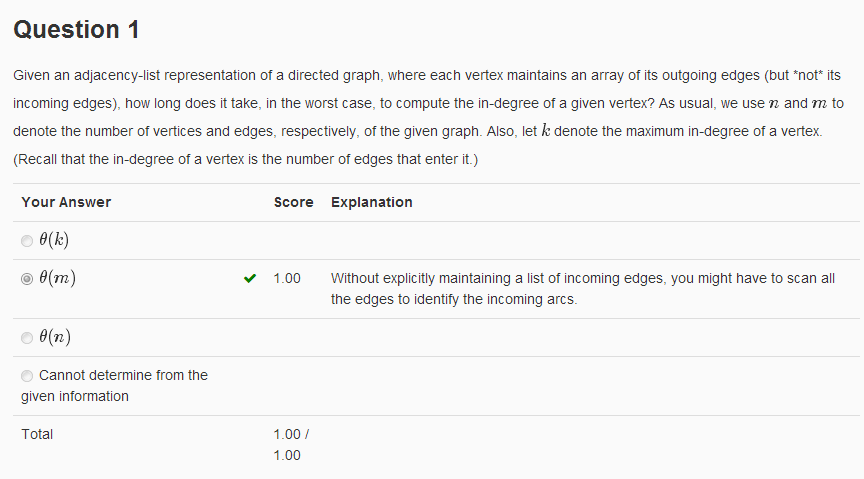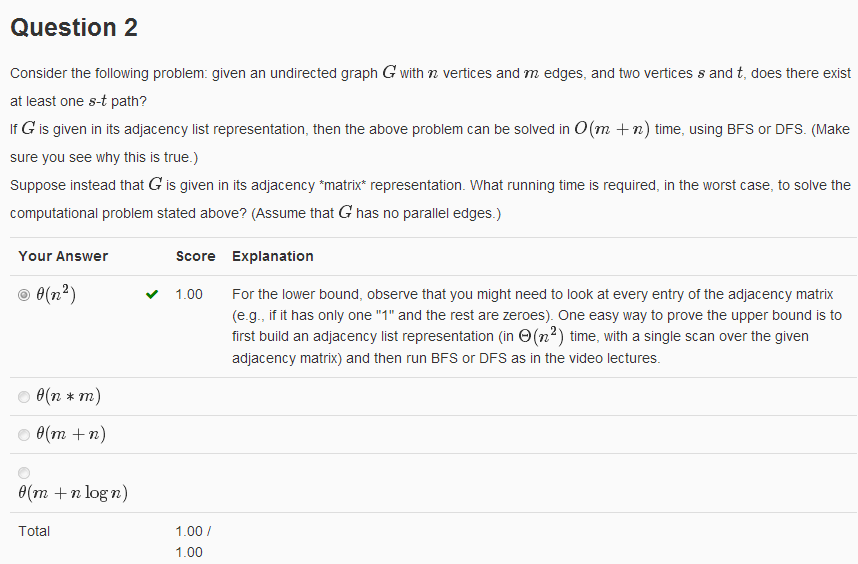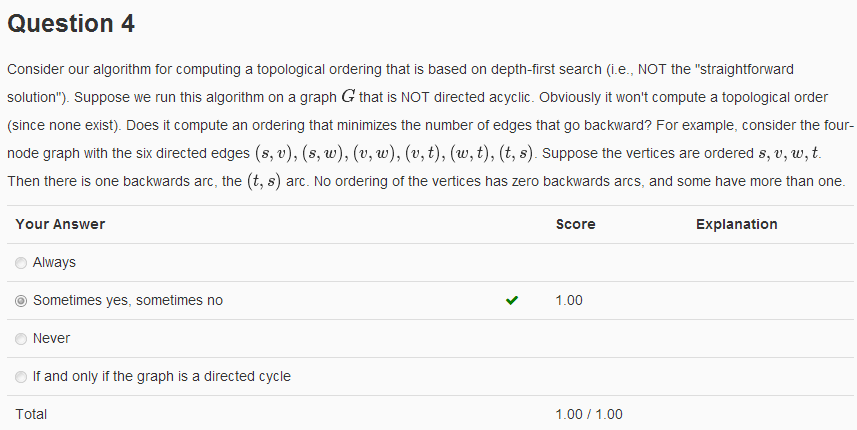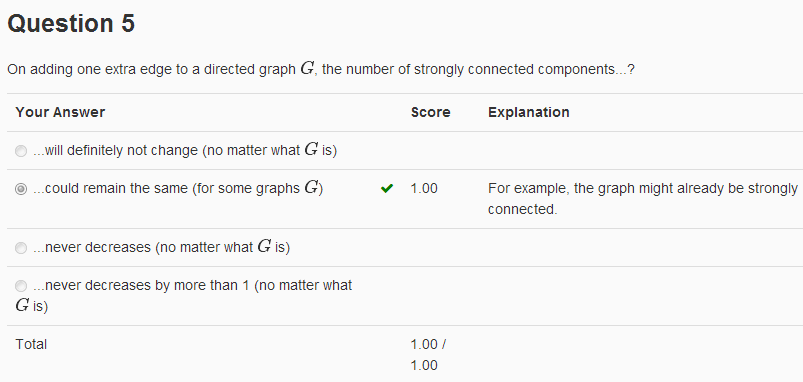Stanford Algorithms: Design and Analysis, Part 1[week 4]
Problem Set-4Programming Question-4Question 1Download the text file here. Zipped version here.(Right click and save link as)The file contains the edges o
Problem Set-4





Programming Question-4
Question 1
The file contains the edges of a directed graph. Vertices are labeled as positive integers from 1 to 875714. Every row indicates an edge, the vertex label in first column is the tail and the vertex label in second column is the head (recall the graph is directed, and the edges are directed from the first column vertex to the second column vertex). So for example, the
11th
row looks liks : "2 47646". This just means that the vertex with label 2 has an outgoing edge to the vertex with label 47646
Your task is to code up the algorithm from the video lectures for computing strongly connected components (SCCs), and to run this algorithm on the given graph.
Output Format: You should output the sizes of the 5 largest SCCs in the given graph, in decreasing order of sizes, separated by commas (avoid any spaces). So if your algorithm computes the sizes of the five largest SCCs to be 500, 400, 300, 200 and 100, then your answer should be "500,400,300,200,100". If your algorithm finds less than 5 SCCs, then write 0 for the remaining terms. Thus, if your algorithm computes only 3 SCCs whose sizes are 400, 300, and 100, then your answer should be "400,300,100,0,0".
WARNING: This is the most challenging programming assignment of the course. Because of the size of the graph you may have to manage memory carefully. The best way to do this depends on your programming language and environment, and we strongly suggest that you exchange tips for doing this on the discussion forums.
#include <iostream>
#include <fstream>
#include <cstdio>
#include <vector>
#define N 875714
using namespace std;
struct node{
bool visited;
int leader;
int finish;
vector<int> linkedVertices;
vector<int> rLinkedVertices;
};
struct node G[N+1];
struct node newG[N+1];//存放修改后的图,下面有问题要问到这个
int t=0;
int s=0;
void dfs(node G[], int i, bool reverse){
G[i].visited=true;
G[i].leader=s;
vector<int> next;
if (reverse) next= G[i].rLinkedVertices;
else next= G[i].linkedVertices;
for(int j=0; j<next.size(); j++){
if(!G[next[j]].visited) {
dfs(G, next[j], reverse);
}
}
t++;
G[i].finish=t;
}
void dfs_loop(node G[], bool reverse){
t=0;
s=0;
for(int i=N;i>0;--i){
if (!G[i].visited){
s=i;
dfs(G,i,reverse);
}
}
}
int main(){
for(int i=1;i<=N;++i){
G[i].visited=false;
}
FILE* fp=freopen("SCC.txt","r",stdin);
int head, tail;
while (scanf("%d %d", &head, &tail) > 0) {
G[head].linkedVertices.push_back(tail);
G[tail].rLinkedVertices.push_back(head);
}
fclose(fp);
dfs_loop(G, true);//FIRST LOOP
for(int i=1;i<=N;++i){
newG[i].visited=false;
newG[i].finish=0;
newG[i].leader=0;
vector<int> temp;
for(int j=0; j< G[i].linkedVertices.size(); j++){
temp.push_back(G[G[i].linkedVertices[j]].finish);
}
newG[G[i].finish].linkedVertices=temp;
}
dfs_loop(newG,false);//SECOND LOOP
ofstream ofs("stat.txt", ofstream::out);
for (int k=1;k<=N;k++) ofs<< newG[k].leader<<endl;
ofs.close();
return 0;
}更多推荐
 已为社区贡献7条内容
已为社区贡献7条内容









所有评论(0)